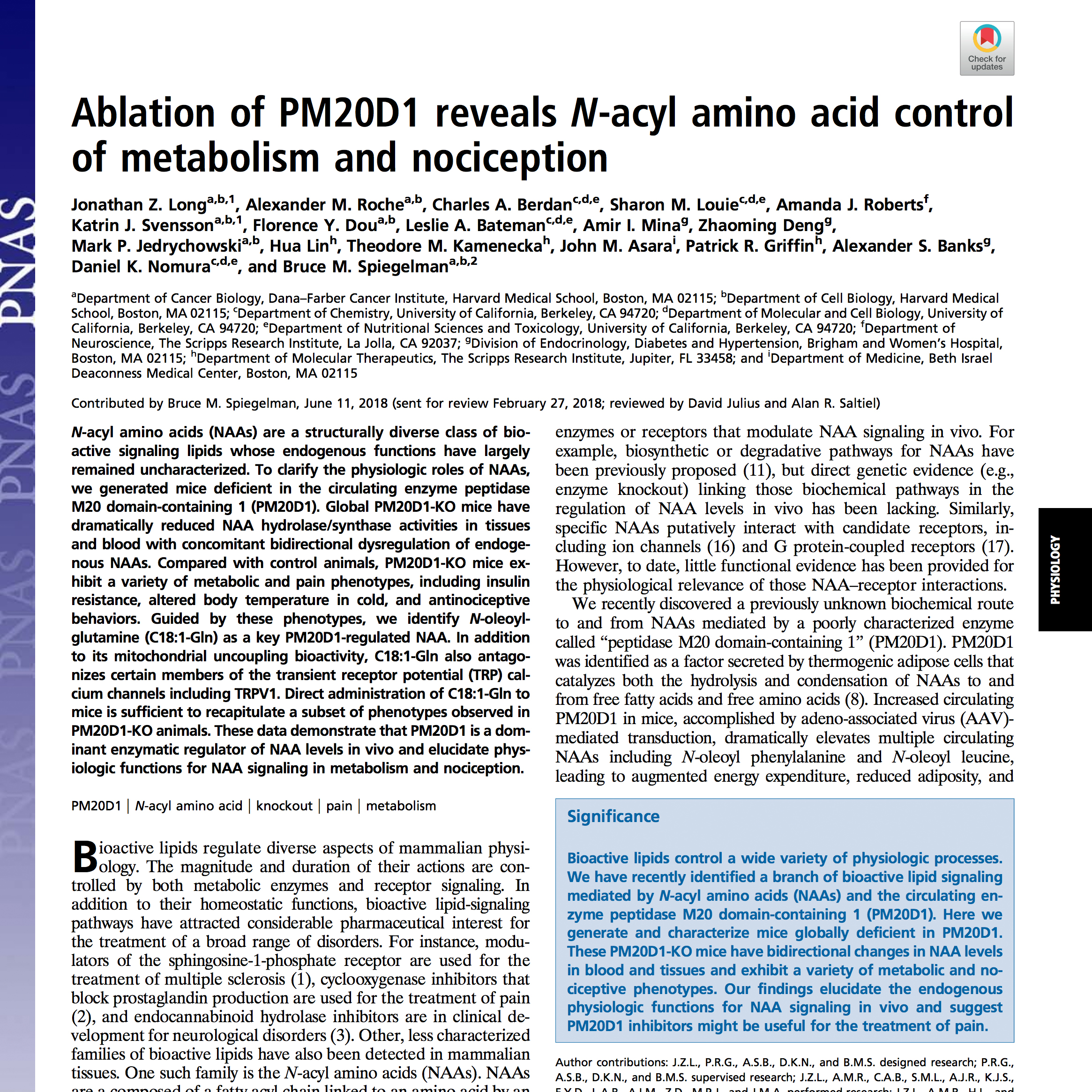Our paper on PM20D1 knockout mice is out in PNAS
We published our PM20D1-KO mouse last week in PNAS! Key to the success of this project was wonderful help from colleagues in the Nomura, Spiegelman, and Banks labs, and a special help from Amanda Roberts. This paper describes our continued efforts to understand the physiologic functions of N-acyl amino acid signaling. We found that PM20D1-KO mice display bidirectional dysregulation of endogenous N-acyl amino acid levels and a variety of metabolic phenotypes including altered thermoregulation and diet-induced insulin resistance.
In addition to metabolism, we also used PM20D1-KO mice to explore other areas of physiology that might be controlled by N-acyl amino acid signaling. For instance, individual members of this lipid family have putative roles in pain sensation, bone function, and vascular homeostasis. We found that PM20D1-KO mice exhibit robust anti-nociceptive behaviors in inflammatory pain models. Guided by these phenotypes, we identify C18:1-Gln as a key PM20D1-regulated lipid that antagonizes certain members of the TRP channels including TRPV1. Our observations add to the growing body of evidence that N-acyl amino acids likely signal through polypharmacologic mechanisms to regulate diverse aspects of organismal physiology.
Projecting forward, we anticipate that more extensive phenotyping of PM20D1-KO mice will likely uncover additional physiologic processes regulated by N-acyl amino acid signaling. Towards this end, we have now deposited the PM20D1-KO to JAX (stock #032193) to help disseminate these mice to the broader scientific community. -JZL
